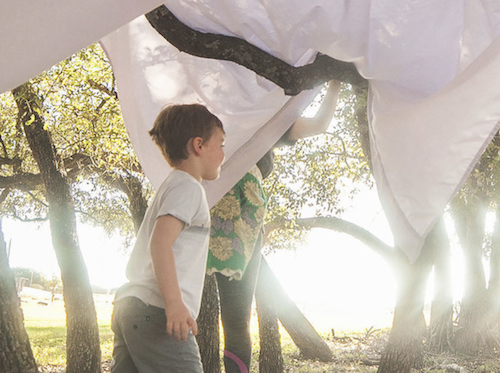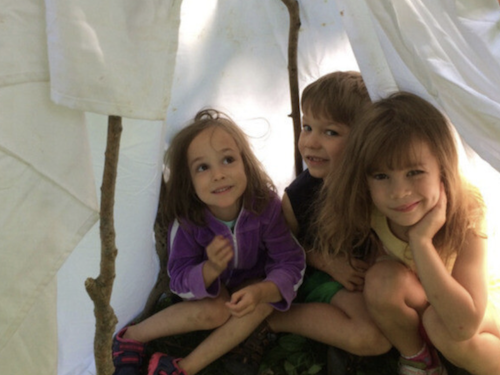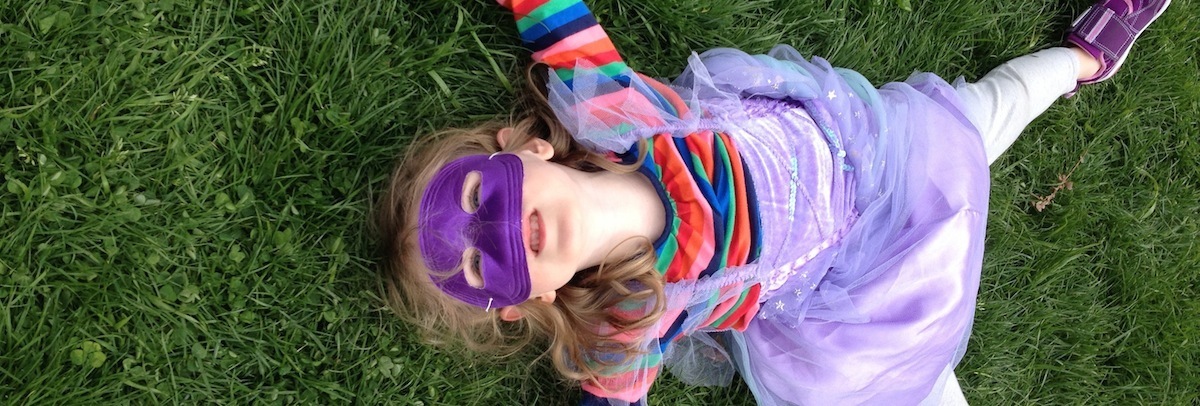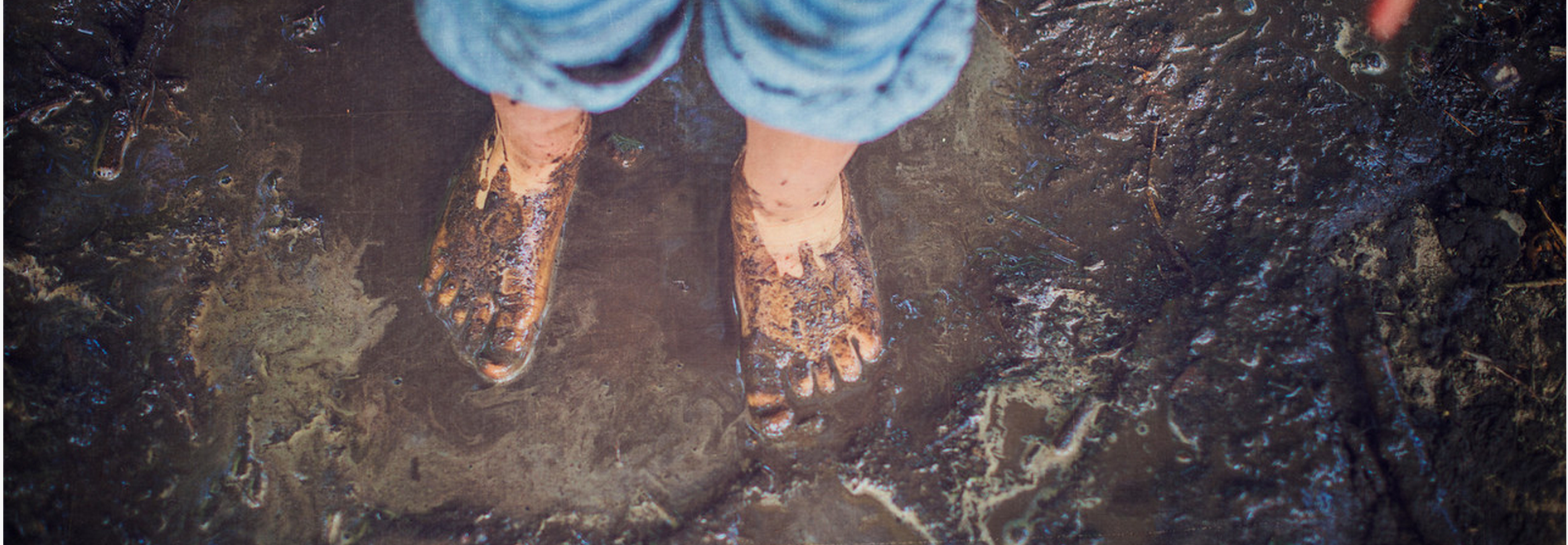Cozy Hideaway
-
Age: 0 to 8+
-
Time: 1 hour+
-
Materials: bed sheet or tarp; bungee cords, tent stakes and/or rope (optional)
- Skills: Imagination, Self Reliance, Persistence & Grit, Behavioral Schema, Sensory, Teamwork
If you’ve ever watched kids play with forts, you know firsthand how captivated kids are by the work of enclosing themselves within small, cozy spaces. And for good reason- this act has positive physical, psychological and cognitive impact. A cozy hideaway can also serve as a shelter in which to hunker down and bear the elements, helping to extend outdoor play regardless of what the weather brings. All you need for this activity is a few simple materials and some family teamwork. And, once constructed, your hideaway will invite endless possibilities for imaginary play.
The Guide
Gather materials:
For a simple hideaway, all you need is a bed sheet or tarp and something to drape it over (i.e. tree branch, table, chairs). You can also offer some simple construction materials, like duct tape, bungee cords or string.
Invite:
Wonder, “How could we use this sheet to make a cozy hideaway?” If you have children under the age of 3, you can set up the hideaway ahead of time. Little ones will get plenty from discovering, experiencing and playing with the hideaway. For older kids, our favorite way to add an element of surprise and put kids in control is to throw all of the materials needed and a note into a large bag (sleeping bag cover, pillow case), then tuck the bag somewhere outdoors. While hiking, you’ll stumble upon the bag and read the note, which introduces the materials as those meant to build a hideout.
Build a hideaway:
Work together as a team in imagining, planning and building a hideaway using your materials. Try to have kids do as much as they can, gently asking questions to guide their process as needed. If all falls apart, you can always suggest one of the simple structures in this video. Note: If you are in a public park, please check the rules to make sure you can attach things gently to trees. If not, you can use other objects like picnic tables, boulders, benches, and even adults, in lieu of trees.
Play!
Once the hideaway is up, let kids have at it. Decorate the inside or outside of their hideaway with their favorite nature treasures. Bring favorite books, stuffed animals or special objects inside. If weather allows, leave the hideaway in place for a few days and invite your child to invent new ways to use and play in their special space. Need ideas? Try out some of these ways to play in your hideaway:
- Animal Play: Invite your child to pretend to be a bear or a bat and build a special cave for it. Or, pretend to be a hedgehog, cozying up in its winter nest. What would these creatures need in their cozy shelter?
- Pretend cooking: Offer bowls, cups or other kitchen items and welcome kids to pretend to cook a meal, gathering additional “ingredients” from outside to add to their play.
- Eat a meal together: Kids love experiencing familiar routines in new ways. Pack a family picnic and enjoy a meal together in your child’s secret hideaway.
- Parachute play: To add a physical twist to the sheet play, invite the kids and/or adults in your home to each take a corner of the sheet and coordinate moving it up and down together. Invite kids to scurry inside the sheet on its way down so they can experience the sensation of being enveloped in the fabric.
- Light and shadow play: Invite kids to experiment with flashlights inside their hideaway. Can they use the light to create shadows?
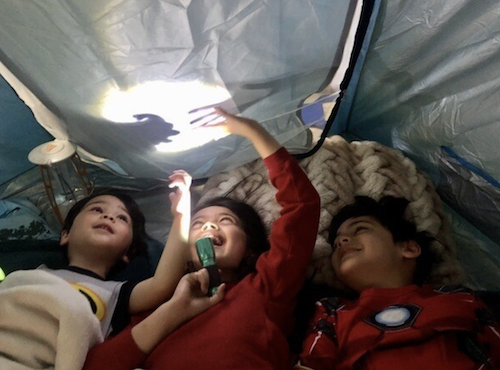
Why is this activity great for kids?
Transforming an everyday object like a sheet into a hideaway supports the development of divergent thinking, a skill that’s at the heart of creativity. As kids engage in the process of planning, trying new techniques and making adjustments to their design, they explore early STEM concepts and activate important skills like problem-solving, collaboration and persistence. As kids maneuver their bodies and heads in different positions to crawl in, out and around tight spaces, they activate their proprioceptive and vestibular systems, the senses that support balance, muscle coordination, attention and focus. Finally, creating this new, super special outdoor space is sure to spark hours of imaginary play.
